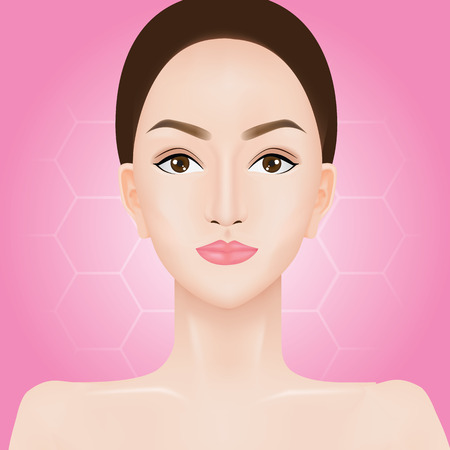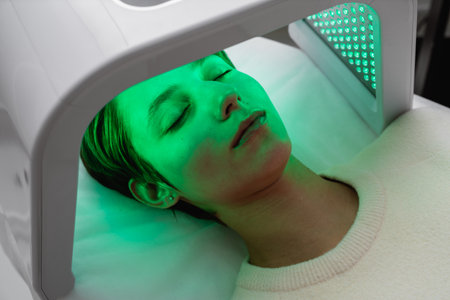Introduction to Laser Hair Removal in India
Laser hair removal has become a revolutionary solution for individuals seeking smooth, hair-free skin across India. Traditionally, hair removal methods such as waxing, threading, and shaving have been widely practiced, but these methods often result in temporary outcomes and discomfort. In recent years, laser hair removal has gained immense popularity among both men and women due to its long-lasting results and minimal side effects. The growing demand for advanced grooming solutions is closely tied to evolving beauty standards in Indian society, where a smooth and clean appearance is increasingly valued not only by women but also by men. Additionally, the multicultural landscape of India brings diverse skin tones and hair types into consideration, making it essential to choose clinics that are equipped with technology suitable for Indian skin. As more people seek effective and permanent options for hair removal, understanding the process of laser hair removal becomes crucial for making informed decisions tailored to cultural preferences and personal needs.
2. How Does Laser Hair Removal Work?
Laser hair removal is a modern cosmetic procedure that uses concentrated beams of light to target and destroy hair follicles, effectively reducing unwanted hair growth over time. The science behind this process involves selective photothermolysis, where the laser emits a specific wavelength of light absorbed by the melanin (pigment) in the hair. The absorbed energy heats up and damages the follicle, inhibiting future hair growth while leaving the surrounding skin unharmed.
Popular Laser Technologies in Indian Clinics
India’s diverse population requires laser technologies that cater to various skin tones and hair types. The most commonly available lasers in reputable Indian clinics include:
| Laser Type | Wavelength | Best Suited For |
|---|---|---|
| Alexandrite Laser | 755 nm | Lighter skin tones with fine to medium hair |
| Diode Laser | 800-810 nm | All skin types, especially Indian skin tones; effective for coarse and thick hair |
| Nd:YAG Laser | 1064 nm | Darker skin tones; reduces risk of pigmentation issues |
Suitability for Indian Skin and Hair Types
The effectiveness and safety of laser hair removal largely depend on your skin tone and hair colour. Generally, lasers work best on individuals with lighter skin and darker hair because the contrast allows for better absorption by the melanin in the hair shaft. However, advances in technology—especially with Diode and Nd:YAG lasers—have made it possible for people with medium to dark Indian skin tones to undergo treatment safely and successfully.
Key Considerations:
- If you have tanned or naturally dark skin, consult a dermatologist about the suitability of Nd:YAG or Diode lasers.
- Those with very light or grey hair may experience less effective results, as there is less pigment for the laser to target.
In summary, understanding how laser hair removal works—and selecting the right technology based on your unique hair and skin type—is crucial for achieving smooth, long-lasting results in India’s climate and cultural context.

3. Preparing for Your First Laser Session
Getting ready for your initial laser hair removal appointment in India involves a few essential steps to ensure safety, comfort, and optimal results. Here’s a step-by-step guide to help you prepare effectively, following dermatologists’ recommendations and practices widely followed across the country.
Step 1: Schedule a Consultation
Before your first session, book a consultation with a qualified dermatologist or laser technician. During this meeting, your skin type, hair colour, and medical history will be assessed. The practitioner will also explain the expected outcomes and address any questions you might have.
Step 2: Avoid Sun Exposure
In India’s climate, sun exposure is common but can increase the risk of side effects like hyperpigmentation after laser treatment. Dermatologists recommend avoiding direct sunlight for at least two weeks before your session. If you need to go outside, wear broad-spectrum sunscreen (SPF 30 or above), cover exposed areas with clothing, and use an umbrella when possible.
Step 3: Shave the Treatment Area
Most clinics advise shaving the target area 24 hours before your appointment. This helps the laser focus on the hair follicles beneath the skin rather than surface hair, reducing discomfort and improving efficacy. Avoid waxing, plucking, or using hair removal creams for at least four weeks prior as these methods remove the root needed for effective treatment.
Step 4: Skip Skincare Products
On the day of your session, do not apply lotions, creams, deodorants, makeup, or perfumes on the area to be treated. Clean skin reduces the risk of irritation and enhances laser penetration.
Step 5: Inform About Medications
Some medications—such as antibiotics or acne treatments—may increase sensitivity or interact with the procedure. Always inform your dermatologist about any medicines or herbal supplements you are taking during your pre-procedure consultation.
Step 6: Wear Comfortable Clothing
Select loose-fitting clothes that allow easy access to the treatment area and minimise friction post-session. For facial treatments, avoid jewellery and heavy accessories.
Common Advice from Indian Dermatologists
Indian dermatologists often remind patients to arrive with realistic expectations—results vary based on individual hair growth patterns and skin types. They also emphasise consistency: multiple sessions spaced four to six weeks apart are usually necessary for best results. Following these preparatory steps helps ensure a smoother experience and increases the likelihood of successful laser hair removal in India’s diverse climatic conditions.
4. The Procedure: What to Expect During Each Session
Undergoing a laser hair removal session in India is a streamlined and professional process, tailored to Indian skin types and cultural preferences. Below is a detailed walkthrough of what you can expect during each appointment, from the moment you enter the clinic until the completion of your session.
Step-by-Step Overview of the Session
| Stage | Description | Typical Duration |
|---|---|---|
| Consultation & Skin Assessment | The dermatologist or technician examines your skin type and hair texture, discusses your medical history, and explains the procedure in detail, often using terms familiar in India (e.g., “wheatish complexion,” “dusky tone”). A patch test may be performed to ensure safety. | 10-15 minutes |
| Cleansing & Preparation | The targeted area is cleansed thoroughly, and any makeup, oil, or lotions are removed. Sometimes, mild Ayurvedic cleansers are used upon request for sensitive Indian skin. | 5-10 minutes |
| Marking & Cooling Gel Application | The area to be treated is marked with a white pencil for accuracy. A cooling gel (often aloe vera-based) is applied to protect the skin and enhance comfort—a common practice in Indian clinics. | 5 minutes |
| Laser Application | The technician uses advanced FDA-approved lasers suitable for Indian skin tones (such as Nd:YAG or diode lasers). Protective eyewear is provided. The laser device emits pulses of light that target hair follicles; a mild pricking or warm sensation may be felt. | 15-60 minutes (depending on area) |
| Post-Treatment Care & Instructions | The cooling gel is wiped off, and soothing creams (like sandalwood-based or cucumber extract creams) may be applied. Aftercare instructions are given in simple English or local languages like Hindi, Tamil, or Bengali for better understanding. | 5-10 minutes |
What Patients Typically Experience During the Treatment
- Sensations: Most patients describe the feeling as similar to a rubber band snap against the skin—mild discomfort but generally tolerable. For sensitive areas, numbing creams may be offered.
- No Downtime: You can return to your routine immediately after the session; however, it’s advised to avoid direct sunlight and apply sunscreen generously—especially important under Indian climatic conditions.
- Cultural Considerations: Many clinics offer gender-specific sessions and female technicians for women seeking privacy as per Indian customs. Sessions are scheduled around festivals or auspicious dates when requested by patients.
- Multiple Sessions Required: Hair grows in cycles; typically 6-8 sessions at intervals of 4-6 weeks are recommended for optimal results on Indian hair types.
Treatment Duration by Body Area (Common in India)
| Area Treated | Session Time (Approx.) |
|---|---|
| Upper Lip / Chin | 10-15 minutes |
| Underarms / Bikini Line | 20-30 minutes |
| Arms / Legs (Full) | 45-60 minutes |
| Back / Chest (Men) | 45-60 minutes |
| Full Face (Women) | 25-35 minutes |
Key Takeaway:
The laser hair removal process in India is safe, efficient, and adapted to both medical standards and local sensitivities. With experienced technicians using specialised equipment suited for diverse Indian skin tones, patients can expect a comfortable experience that fits seamlessly into their lifestyle and cultural context.
5. Aftercare and Recovery Tips
Understanding the Importance of Aftercare in India
Proper aftercare following laser hair removal is crucial, especially considering India’s unique climate and lifestyle factors. The hot, humid summers and strong sun exposure can influence the skin’s healing process, making diligent post-procedure care essential for optimal results and minimising side-effects.
Essential Aftercare Steps
1. Protect Your Skin from Sun Exposure
Direct sunlight can increase sensitivity and the risk of pigmentation after laser treatment. Always use a broad-spectrum sunscreen with SPF 30 or higher, even indoors, as Indian sunlight can be quite harsh. Wearing loose cotton clothing over treated areas also helps shield your skin from UV rays.
2. Keep the Area Cool and Soothed
Apply a gentle, fragrance-free aloe vera gel or a dermatologist-recommended soothing lotion immediately after treatment. This helps calm any redness or irritation, which is common due to India’s warm weather. Avoid using products with alcohol or artificial fragrances as they may aggravate sensitive skin.
3. Avoid Heat and Sweating
Refrain from hot showers, saunas, steam baths, or intense physical activities that cause excessive sweating for at least 48 hours post-treatment. The Indian climate can make this challenging, so try to stay indoors during peak heat hours and keep your environment cool whenever possible.
4. Say No to Harsh Products
Avoid using scrubs, exfoliants, or chemical-based creams on the treated area for at least a week. Gentle cleansing with mild soap and lukewarm water is recommended to prevent irritation or infection.
5. Watch Out for Common Side Effects
Mild redness, swelling, or a sensation similar to sunburn are typical after laser sessions. If you notice these effects persisting beyond 48 hours or if there are signs of blistering or infection, consult your dermatologist promptly.
Popular Indian Remedies and Products for Post-Laser Care
- Aloe Vera Gel: Easily available in India, it is excellent for cooling and hydrating the skin.
- Cucumber Extract Lotions: Naturally soothing and effective against inflammation.
- Coconut Oil (Use with Caution): While coconut oil is popular in India for moisturisation, avoid applying it immediately post-laser unless advised by your specialist.
Lifestyle Adjustments for Best Results
If you follow traditional Indian routines like daily oil massages or herbal treatments, inform your dermatologist before resuming them post-treatment. Patience is key—avoid picking at scabs or scratching the treated area to prevent pigmentation issues common among Indian skin types.
Summary
The recovery period after laser hair removal in India calls for attentive skincare tailored to local weather conditions and daily habits. By following these practical tips and consulting with your skin specialist as needed, you can achieve smooth, radiant skin safely and effectively.
6. Risks, Considerations, and Choosing a Certified Clinic
Understanding Potential Side Effects
While laser hair removal is generally safe when performed by qualified professionals, it is important to be aware of potential side effects. Common temporary reactions include redness, mild swelling, and a sensation similar to sunburn in the treated area. Some individuals may also experience slight pigmentation changes or, in rare cases, blistering. Darker skin tones, which are common among Indians, require special attention because they may be more susceptible to hyperpigmentation or hypopigmentation. It is crucial to discuss your skin type and medical history with the practitioner before starting treatment.
Safety Considerations for Indian Skin Types
Indias diverse population includes a wide range of skin types and tones. Modern laser technology, such as Nd:YAG lasers, is suitable for darker complexions commonly found in India, but not all clinics may have access to the latest equipment. Always verify if the clinic uses FDA-approved devices and has experience treating Indian skin. Additionally, make sure the clinic performs a patch test before proceeding with full treatment to minimise risks and ensure your safety.
The Importance of Certified Practitioners
For optimal results and safety, always choose a clinic staffed by certified dermatologists or trained laser technicians. In India, look for practitioners who are registered with the Medical Council of India (MCI) or hold relevant qualifications in dermatology or cosmetic medicine. Avoid salons or spas that offer laser treatments without medical supervision as this increases the risk of complications.
How to Find Reputable Clinics in India
- Research Online: Check reviews on platforms like Practo or Google for honest patient feedback.
- Verify Credentials: Confirm the clinic’s registration status and ask about the staff’s medical qualifications.
- Schedule a Consultation: A reputable clinic will offer an initial consultation where you can ask questions about their equipment, procedure steps, and aftercare protocols.
- Transparency in Pricing: Genuine clinics provide clear cost breakdowns without hidden charges or unrealistic package deals.
Cultural Considerations
In India, modesty and privacy during procedures are highly valued. Ensure the clinic respects your comfort and provides female practitioners if preferred. Also, discuss any religious or personal considerations that might affect your treatment plan.
Selecting a certified clinic in India ensures not only effective results but also peace of mind throughout your laser hair removal journey. Always prioritise safety and professionalism over convenience or low costs when making your decision.
7. Frequently Asked Questions about Laser Hair Removal in India
Is Laser Hair Removal Painful?
Pain tolerance can vary from person to person, but most Indian clients describe the sensation as a mild tingling or snapping feeling, similar to a rubber band against the skin. Modern laser technologies used in India often have cooling devices or gels to minimise discomfort, making the process manageable for most skin types and tones found in the country.
How Many Sessions Are Needed for Best Results?
The number of sessions required depends on individual factors such as hair density, thickness, skin type, and the area being treated. On average, Indian clients may need between 6 to 8 sessions spaced 4 to 6 weeks apart for optimal results. Some areas with thicker or coarser hair might require additional touch-ups for complete smoothness.
Is Laser Hair Removal Affordable in India?
Laser hair removal is increasingly accessible in metropolitan cities like Mumbai, Delhi, and Bangalore, with competitive pricing offered by both clinics and dermatology centres. Costs are influenced by the size of the treatment area, technology used, and clinic reputation. Many providers offer packages or EMI options tailored to the needs of Indian families and young professionals seeking long-term solutions.
What Results Can I Expect?
Most Indian clients notice significant reduction in hair growth after a few sessions, with smoother skin and finer regrowth. Permanent hair removal is not guaranteed, but long-term reduction is achievable with regular maintenance. Factors such as hormonal imbalances—common among Indian women—may affect outcomes and require periodic follow-up treatments.
Are There Any Side Effects?
Minor redness or swelling may occur post-treatment but usually subsides within a few hours. Reputable clinics in India take extra care to customise settings based on Indian skin tones (Fitzpatrick types IV-VI) to minimise risks like pigmentation changes.
Can Darker Skin Tones Undergo Laser Hair Removal Safely?
Yes, advanced diode and Nd:YAG lasers are safe and effective for darker Indian skin tones when performed by trained professionals. Always ensure your provider uses technology suitable for your specific complexion to avoid side effects.
Is There Any Downtime After Each Session?
No significant downtime is expected; most people resume their normal activities immediately after treatment. It is recommended to avoid sun exposure, hot showers, or harsh skincare products for 24-48 hours post-procedure to protect your skin.
Conclusion
If you’re considering laser hair removal in India, understanding these common concerns will help you make an informed decision tailored to your unique needs and cultural context. Consult a certified dermatologist or laser technician for a personalised treatment plan that ensures safety and satisfaction.


